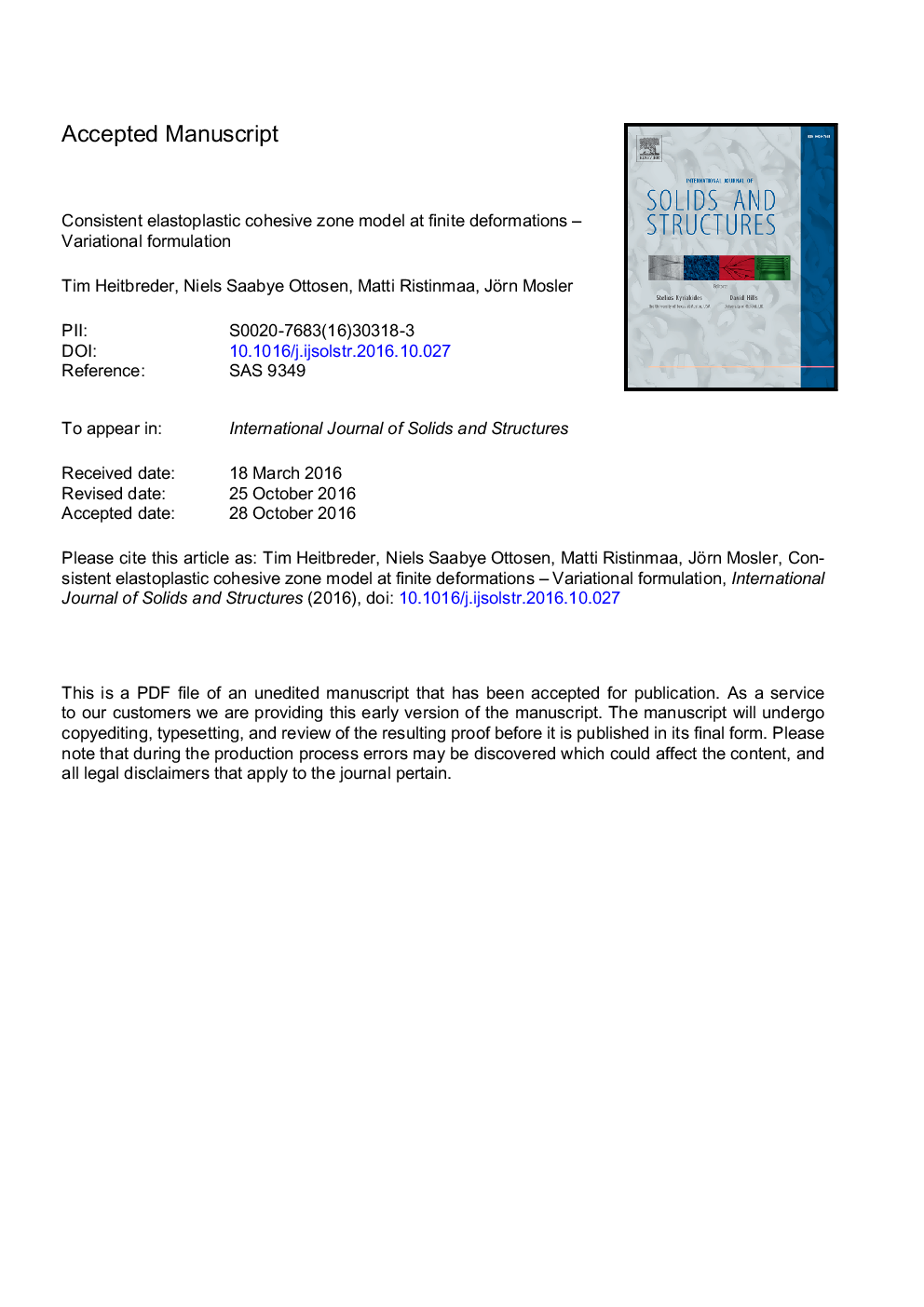| Article ID | Journal | Published Year | Pages | File Type |
|---|---|---|---|---|
| 4922643 | International Journal of Solids and Structures | 2017 | 27 Pages |
Abstract
Cohesive zone models based on classical interface-type formulations at finite deformations are subjected to fundamental physical principles such as thermodynamical consistency, balance equations and material frame indifference. However, these restraints are often ignored and in that respect such formulations are inconsistent. By way of contrast, a consistent cohesive zone framework suitable for the analysis of localized elastoplastic deformations which only depends on the displacement jump was recently advocated in Ottosen et al. (2015). A certain subclass of this consistent framework is analyzed here, further extended and finally, an efficient numerical implementation is proposed. Conceptually, the considered cohesive zone model is a fiber-like model where the fiber direction is defined by the direction of the displacement discontinuity. A novel unloading model is advocated where the key idea is to assign a vanishing bending stiffness to the fibers and they therefore buckle when compressive stresses are initiated. Following ideas known from wrinkling in membranes, it is shown that the resulting framework can be rewritten into a variationally consistent format such that all unknowns follow jointly from minimizing a time-dependent potential whose discretization leads to an efficient implementation in terms of an efficient variational constitutive update. The physical properties of the final constitutive framework are analyzed by means of numerical examples. This analysis shows that although the framework is based on elastoplasticity, it predicts for the L-shaped structure investigated a mechanical response similar to that of damage theory even during unloading.
Related Topics
Physical Sciences and Engineering
Engineering
Civil and Structural Engineering
Authors
Tim Heitbreder, Niels Saabye Ottosen, Matti Ristinmaa, Jörn Mosler,
